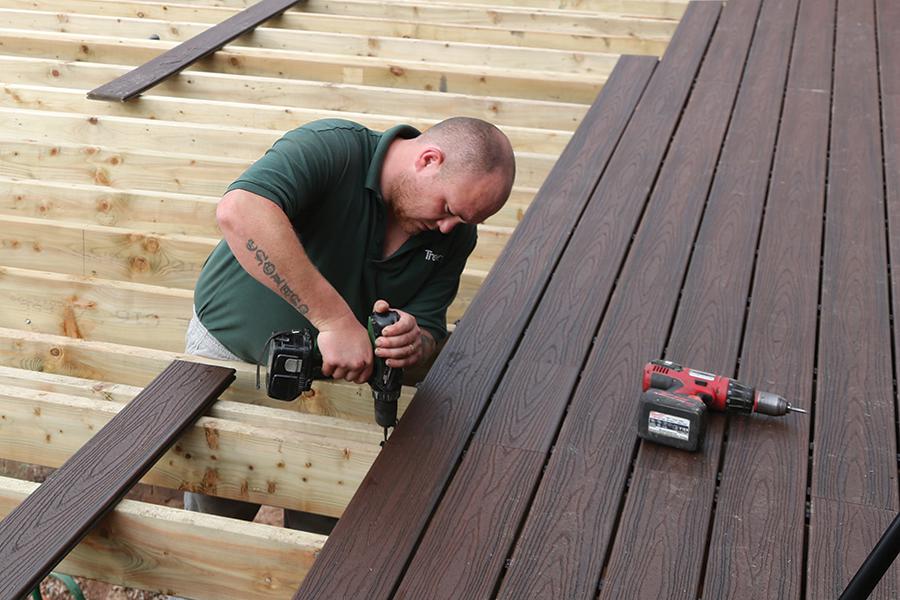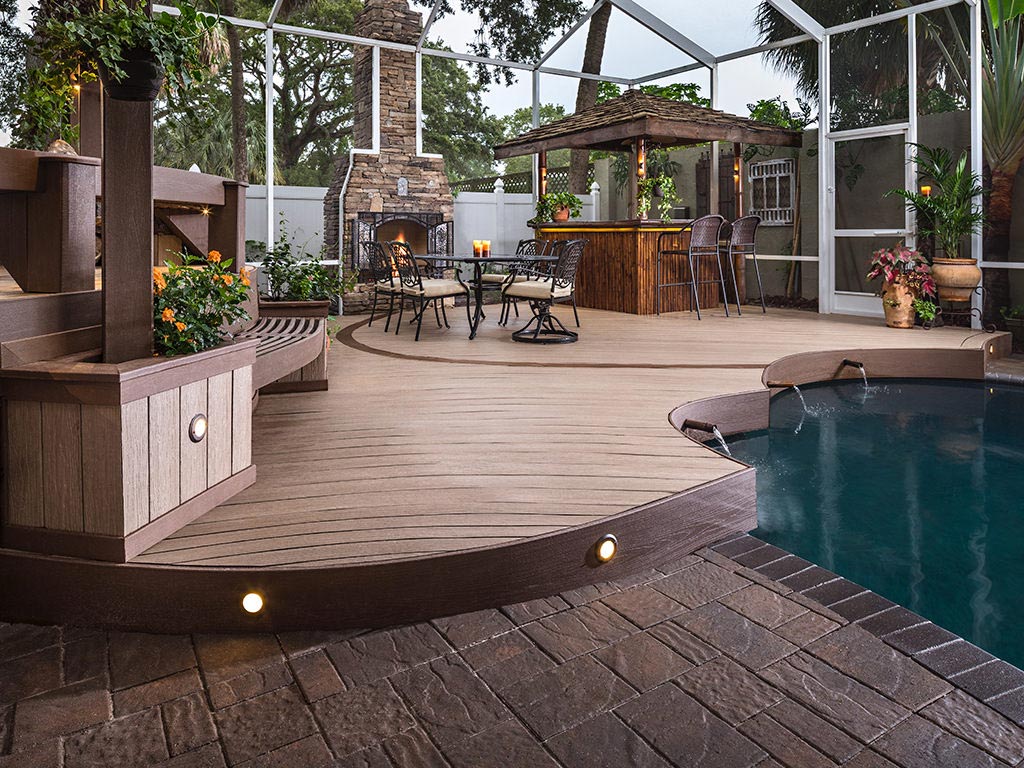Make the most of your backyard space with a trusted deck installation Austin TX contractor.
Exactly how to Choose the Right Products for Your Deck Setup Project
Choosing the suitable products for your deck setup project can seem difficult. There are countless variables to take into consideration, from toughness and maintenance to aesthetics and ecological influence. The selection between standard timber and composite materials, each with its own set of benefits and downsides, can be specifically difficult. The secret is to balance your budget plan, design preferences, and way of living requires to produce a deck that will enhance your outdoor area for many years to come.
Recognizing the Different Sorts Of Deck Products
When getting started on a deck setup project, the choice of products ends up being a critical decision. Numerous choices are available, each with unique characteristics and visual charm. Conventional wood, as an example, uses an ageless, natural look and is usually much more affordable. It can warp over time and calls for routine maintenance. Composite products, on the other hand, are a blend of wood and plastic, offering resilience and resistance to weather elements. They demand much less upkeep contrasted to timber yet are typically much more expensive. Another choice is vinyl, which is essentially maintenance-free and resistant to pests and rot, albeit much less natural-looking. By comprehending these distinctions, house owners can make a much more enlightened decision on one of the most suitable deck material for their certain needs.
Examining the Longevity and Maintenance Requirements of Deck Materials
Examining the sturdiness and upkeep demands of deck materials is a vital action in deck installment. Durability entails the material's capacity to hold up against extreme climate problems, wear and tear, and its long life.
Understanding upkeep needs is similarly essential. Some materials require routine securing or tarnishing to preserve their look and resist wetness damages, while others, like composite decking, demand much less upkeep. By evaluating these variables, one can select one of the most appropriate outdoor decking material, ensuring an equilibrium between durability, upkeep needs, and visual appeal.
Expense Analysis: Comparing Timber and Composite Decking
Although price may originally look like a second concern, it is a substantial aspect when contrasting wood and composite outdoor decking. Timber, typically a less costly alternative, has a lower in advance price. Nonetheless, over time, maintenance expenditures can gather, possibly making wood much more pricey over time. These upkeep costs might include discoloration, securing, or changing harmed boards. On the various other hand, composite decking, while more expensive at first, needs less upkeep, possibly reducing long-term expenses. It's essential to bear in mind that composite decking isn't impervious to wear and tear, and replacement costs can be high. Possible deck owners must consider their budget and willingness to maintain their decks when deciding in between timber and composite outdoor decking.
Looks and Style Versatility of Decking Materials
Natural wood decking supplies a timeless, classic look, while composite materials provide a large array of shades and textures to fit diverse tastes and designs. Compound materials, while less flexible in design, are still adaptable sufficient for most deck layouts. These aspects, consequently, are crucial factors in the selection of decking material.
Ecological Impact of Decking Products
When choosing outdoor decking materials, one need to consider not only looks and durability, but additionally the ecological influence. It is essential to analyze the sustainability of products and check out recycled decking options. Furthermore, recognizing the possible effect on regional communities will ensure an extra ecologically accountable choice.
Analyzing Product Sustainability
In the realm of deck construction, examining material sustainability is an essential action. This includes evaluating the ecological impact of each possible material, taking into consideration aspects such as the energy needed for its production, its carbon impact, and its end-of-life disposal or recycling alternatives. For example, timber is a renewable source, but unsustainable logging techniques can result in logging. Composite outdoor decking products frequently incorporate timber and plastic, decreasing the need for brand-new wood however enhancing dependence on fossil fuels. Aluminum and various other steels might be extra resilient and recyclable, yet their removal and processing can be energy-intensive. Thus, the selection of decking materials must stabilize functionality, appearances, cost, and sustainability to make sure a liable and resilient installment.
Recycled Outdoor Decking Alternatives

Composite outdoor decking is particularly prominent because of its durability and simplicity of maintenance. It's immune to rot, pests, and fading, making it a durable option. Recycled plastic decking, on the other hand, is extremely durable and needs marginal maintenance. While these products might carry a higher initial expense, their longevity and minimized environmental effect make them a sensible financial investment for the eco-conscious house owner.

Effect on Local Ecosystems
While the benefits of utilizing recycled materials for outdoor decking can not be overstated, it's just as crucial to consider the broader ecological effects of these options. Appropriate disposal of old decking is essential to decreasing garbage dump waste. Essentially, an eco-conscious deck task needs mindful material choice, sustainable sourcing, and liable disposal.
Making Your Decision: Tips for Selecting the Ideal Deck Materials
As the post shifts into the subtopic of "Making Your Last Choice: Tips for Choosing a knockout post the Best Deck Products", it is vital to understand the selection of deck products available. Striking an equilibrium between sturdiness and aesthetics is necessary in this choice process. The following discussion will certainly direct visitors in making an educated selection based on these essential factors to consider.
Comprehending Various Deck Materials
The job of choosing the ideal products for your deck installation can appear discouraging due to the huge selection of alternatives available. Nevertheless, recognizing the different materials can simplify this procedure. Timber is a preferred like it choice, using a timeless visual and affordability. Types of wood utilized consist of pressure-treated lumber, cedar, and redwood. Composite materials, made from a blend of wood and plastic, are low-maintenance and resistant to rot and bugs. Plastic or PVC decks are much more resilient and need much less upkeep than composite products, yet they can look less natural. Lastly, aluminum decks are strong, lightweight, and resistant to rot, however they are likewise the most costly choice. Each material has its own advantages and disadvantages, making it critical to consider your specific requirements prior to making a final decision.
Sturdiness vs. Appearances Equilibrium
Stabilizing toughness with visual appeals can be a difficulty when choosing deck products - deck installer austin. High-traffic areas might necessitate durable products like composite outdoor decking, which endures wear and tear but might lack the all-natural beauty of wood. Property owners require to strike an equilibrium, considering both the deck's functional needs and their visual choices.
Conclusion
To conclude, choosing the appropriate materials for your deck installment task calls for cautious factor to consider of aspects such as resilience, maintenance, cost, looks, and ecological effect. Whether you select typical timber or composite products, your option needs to straighten with your budget plan, layout choices, and way of living. Eventually, the very best outdoor decking product is one that enhances your exterior area Source and offers satisfaction for several years to find.